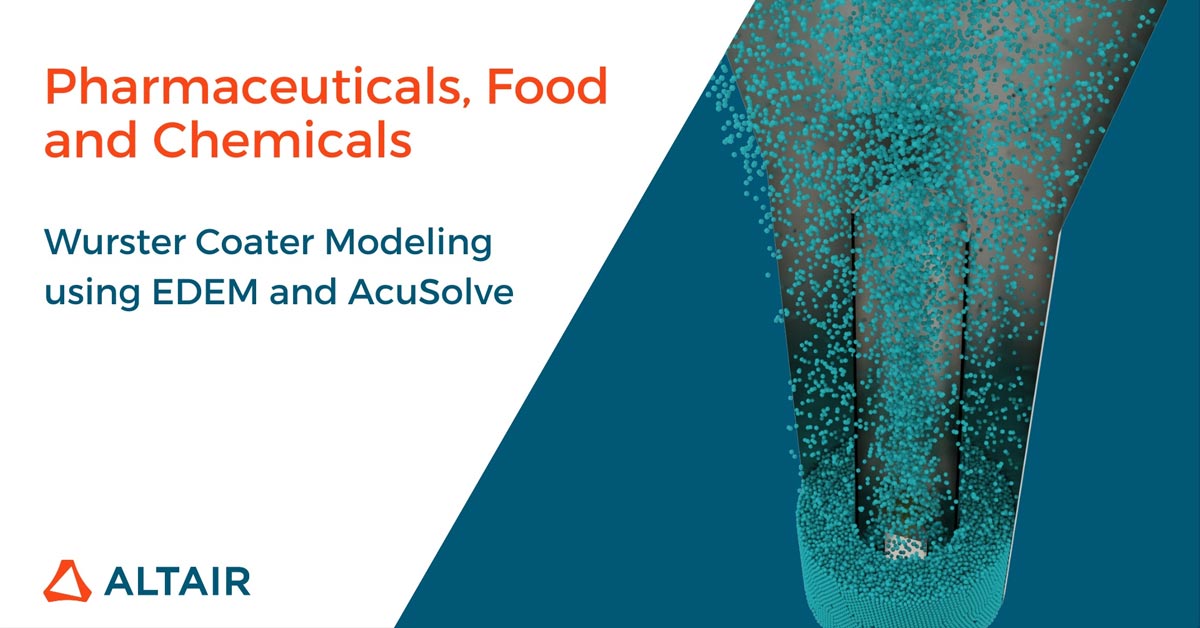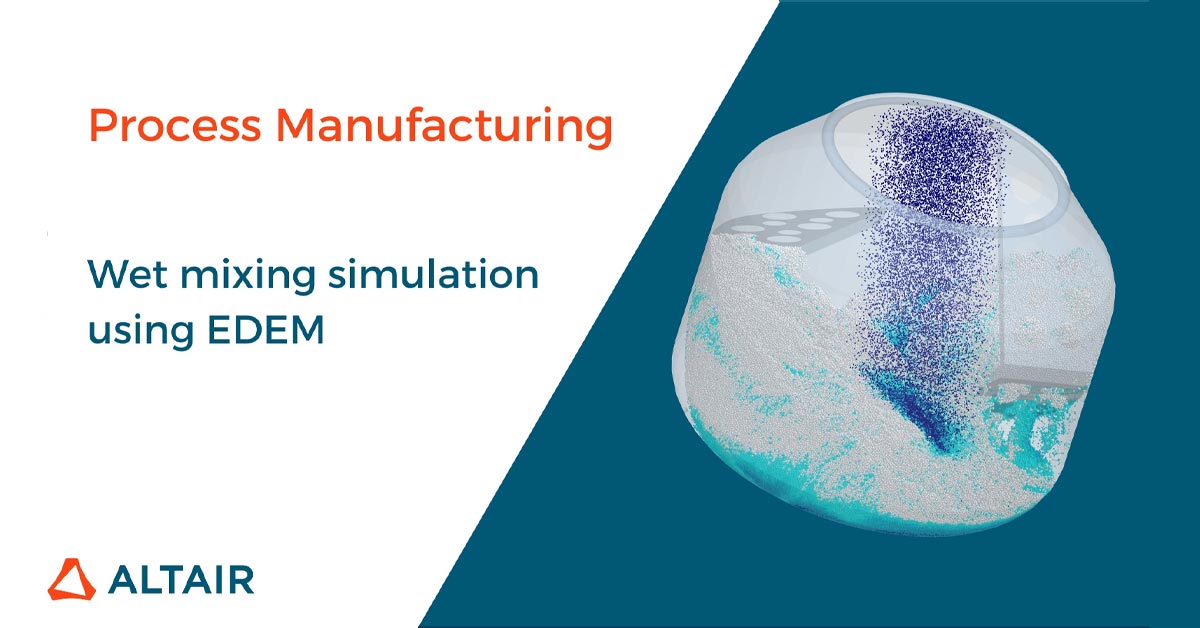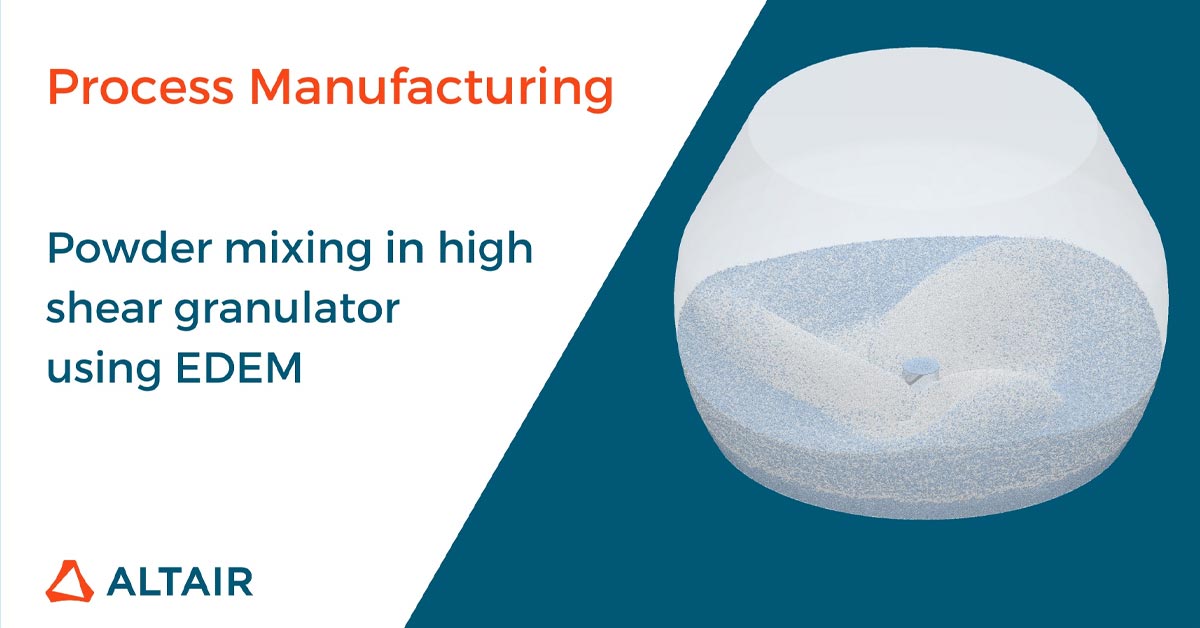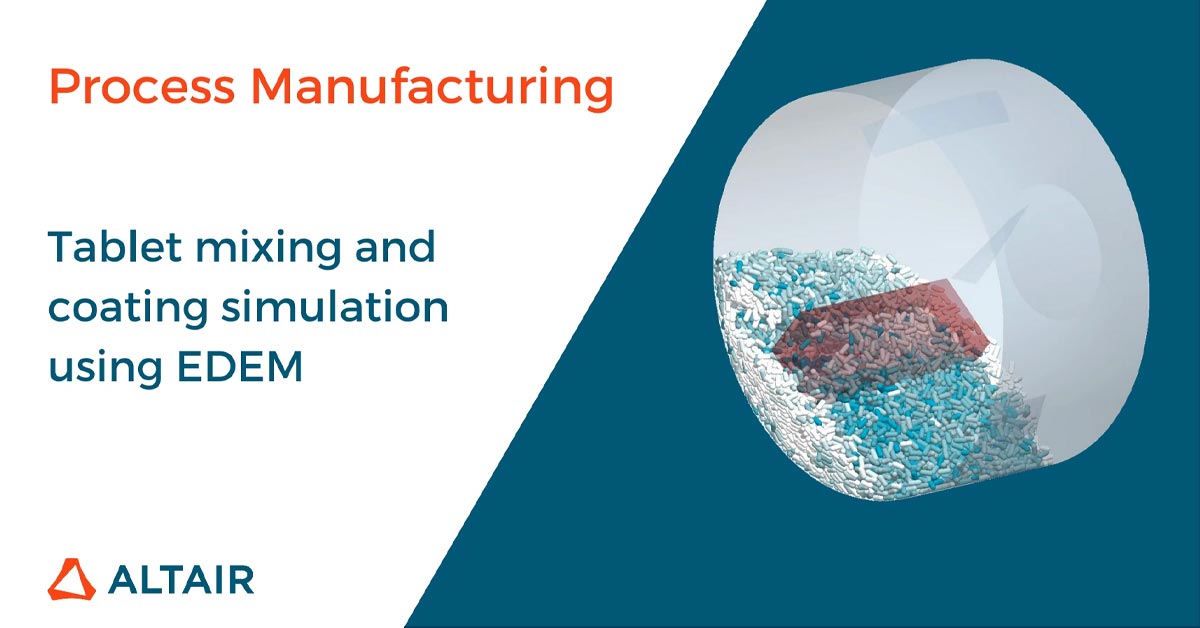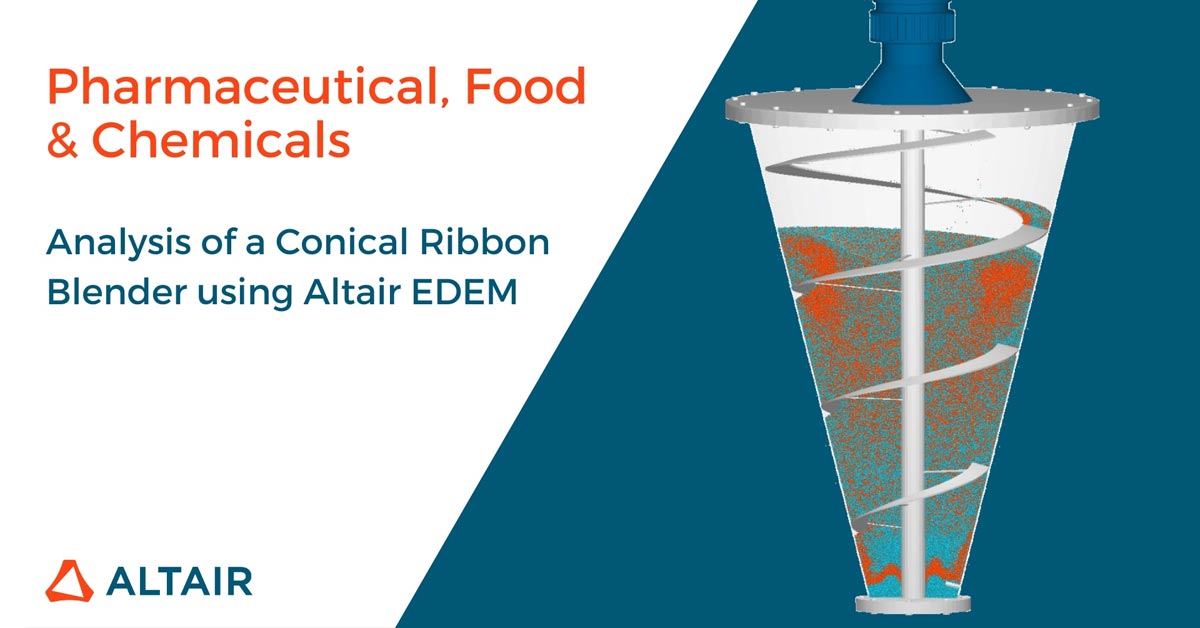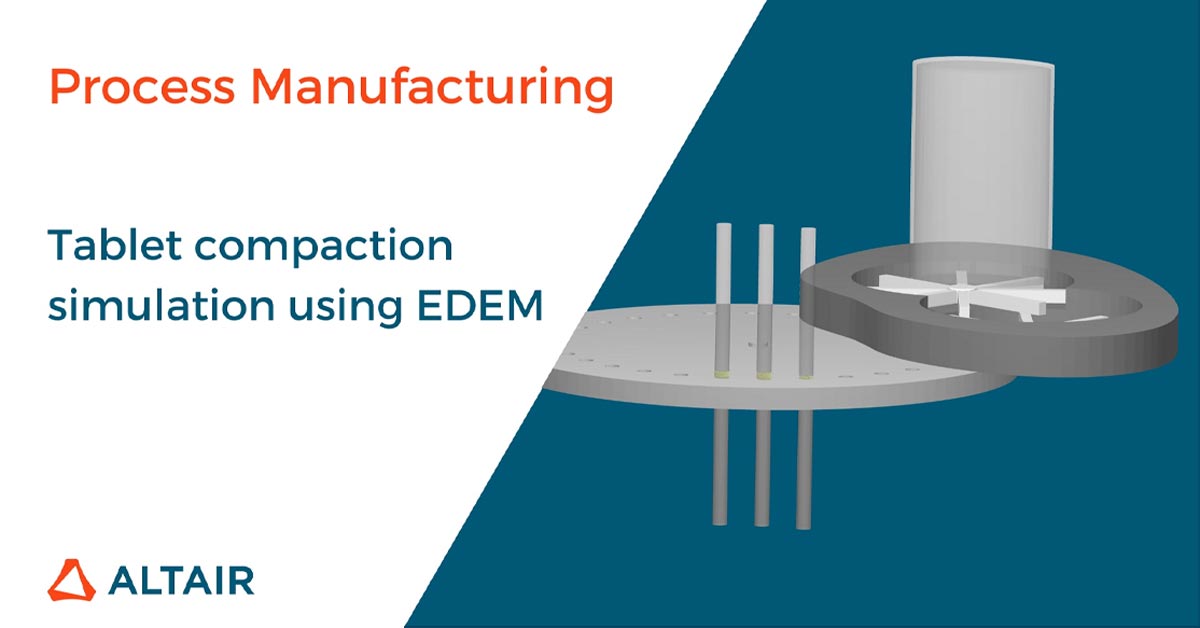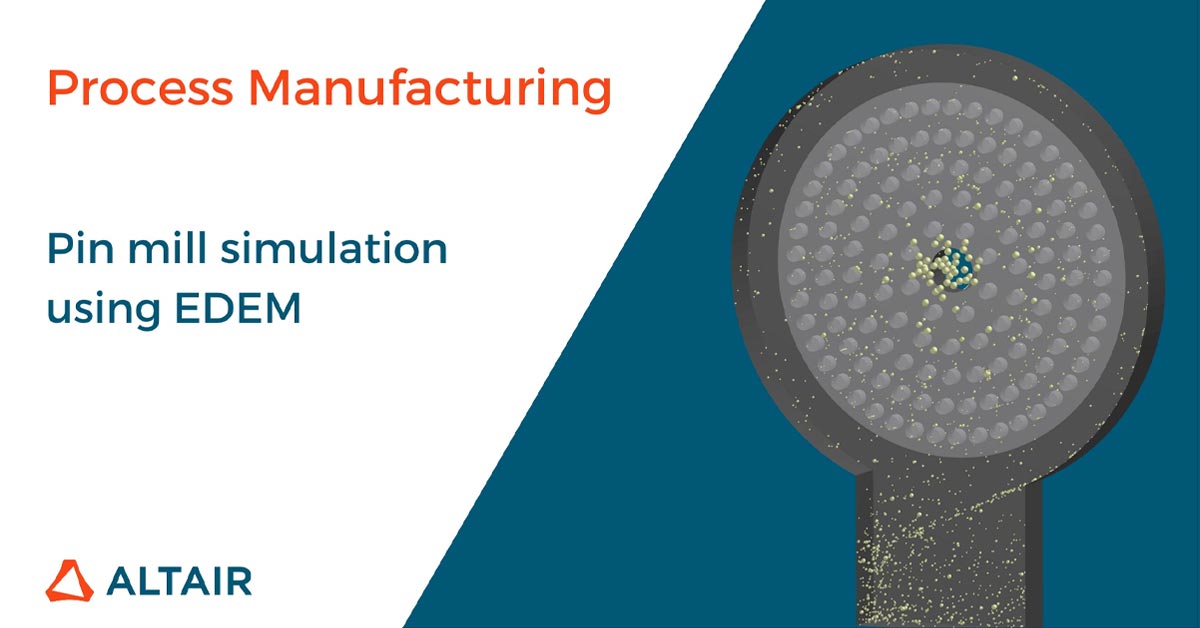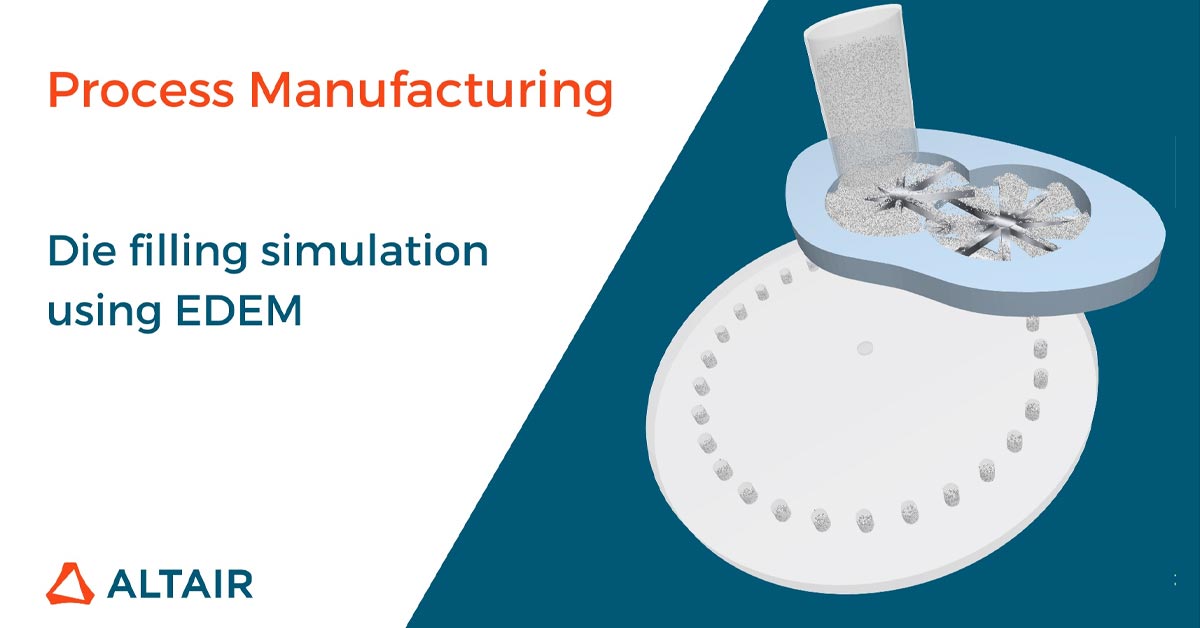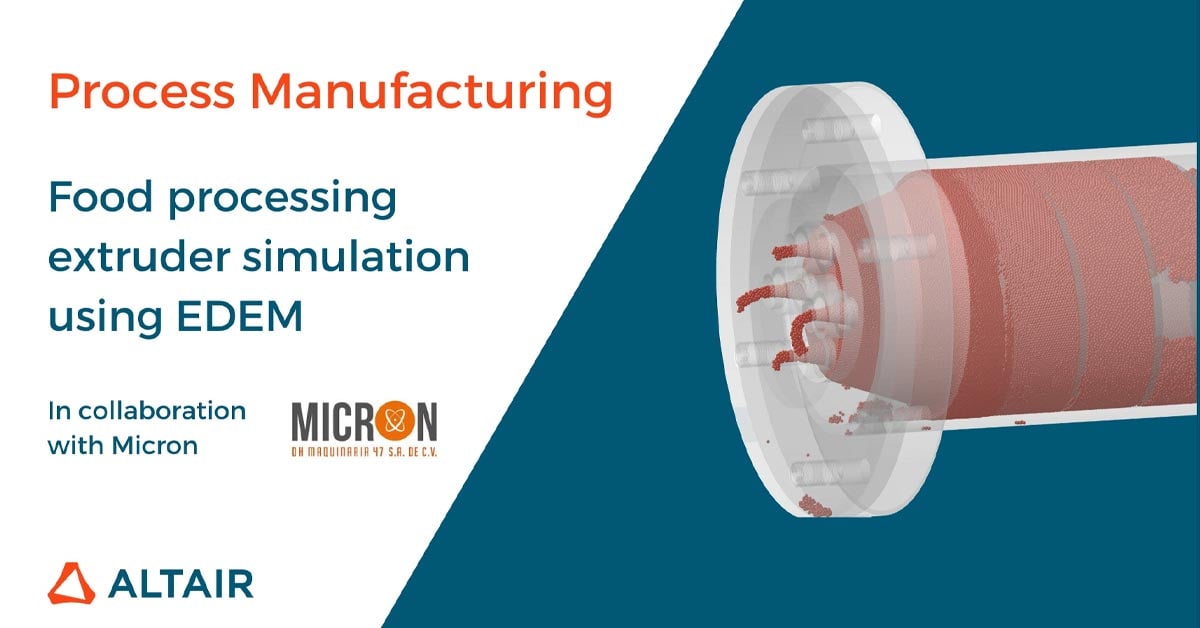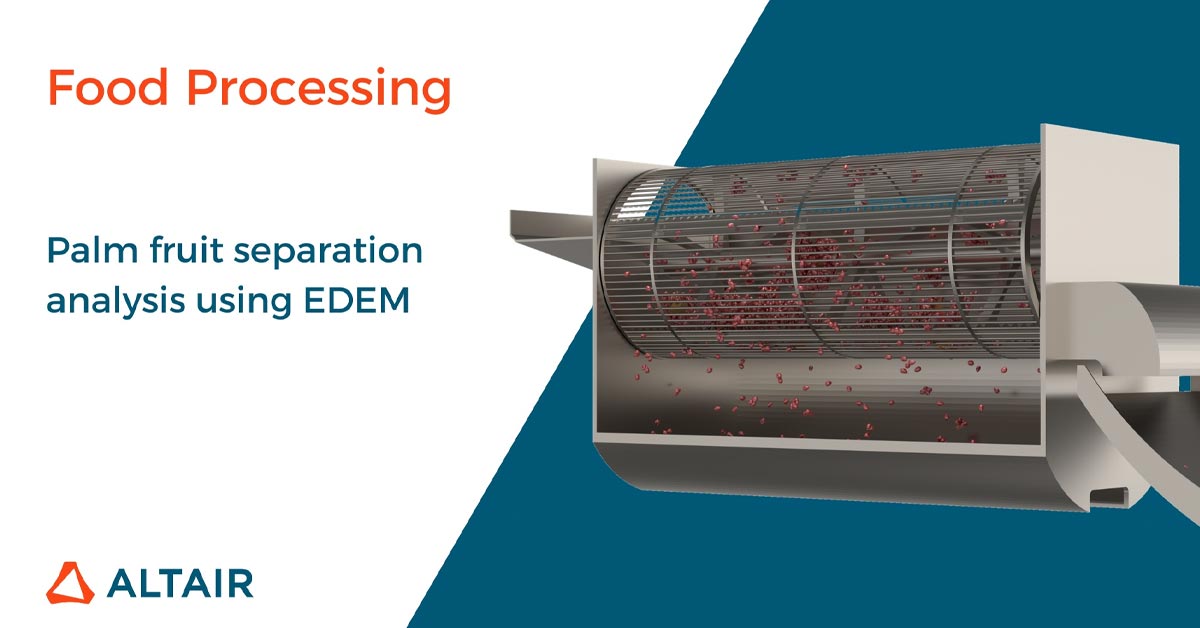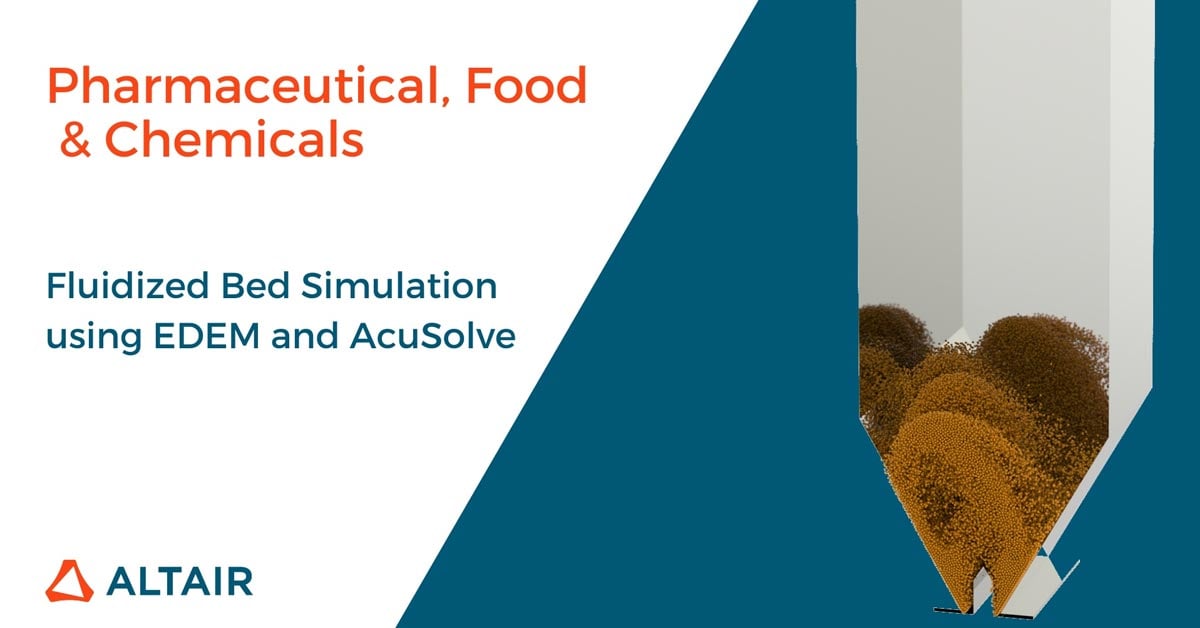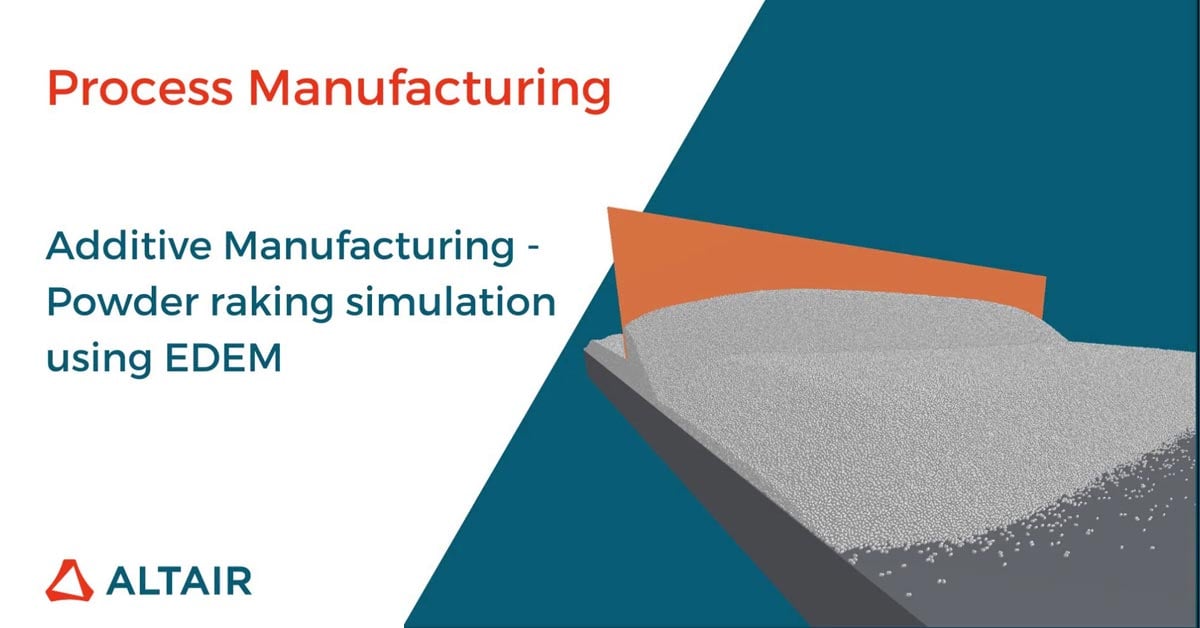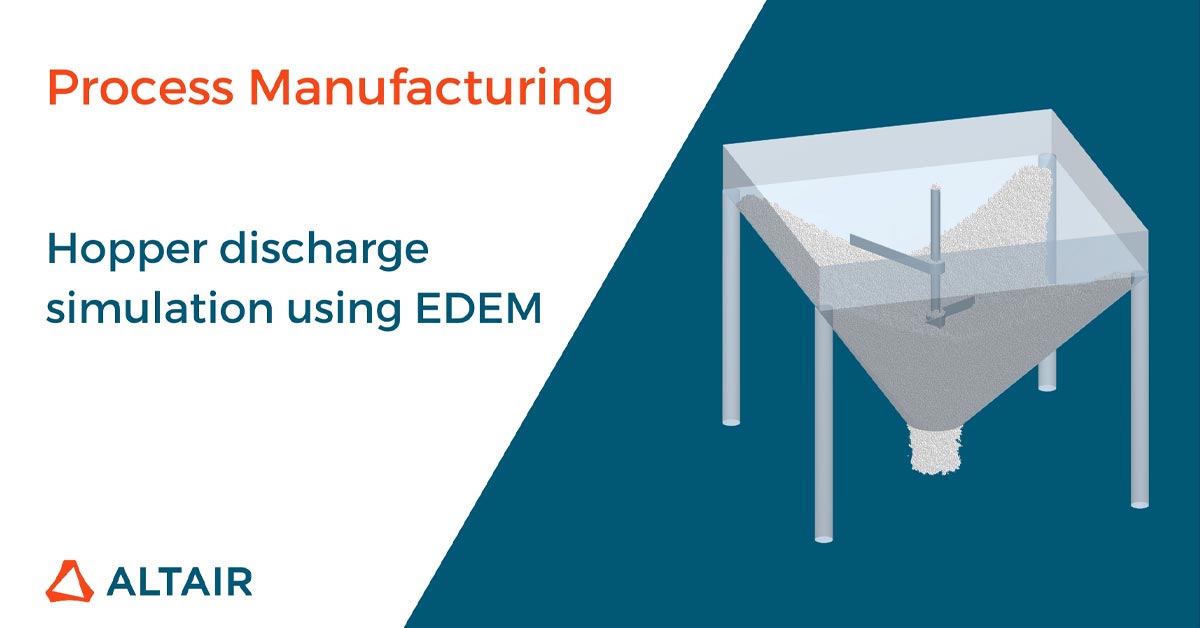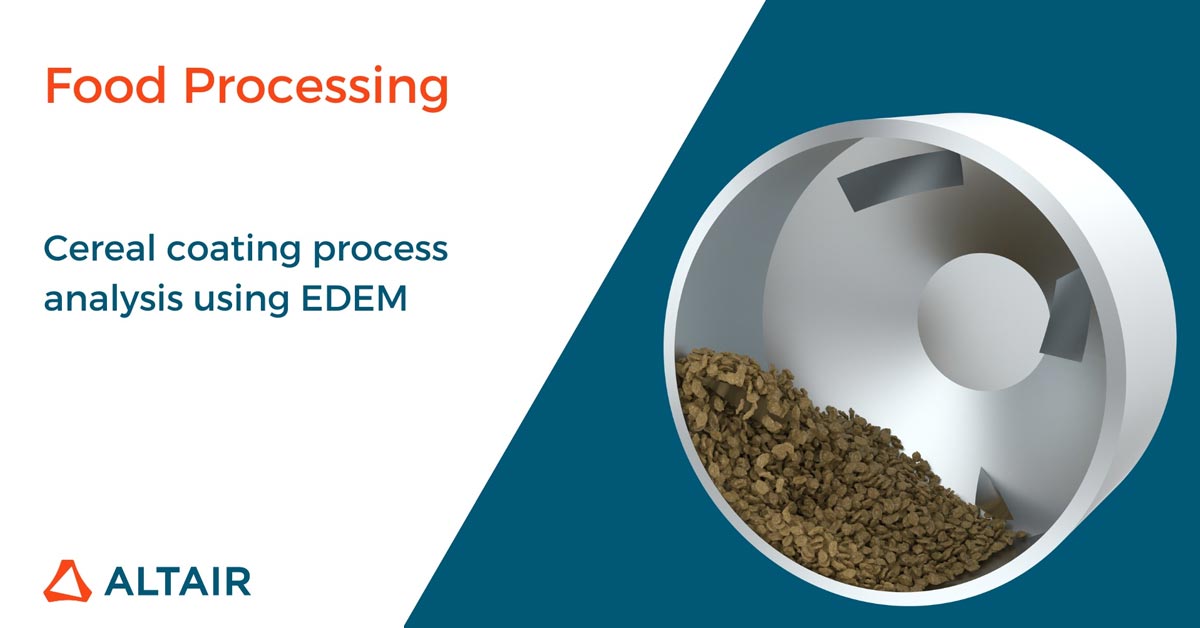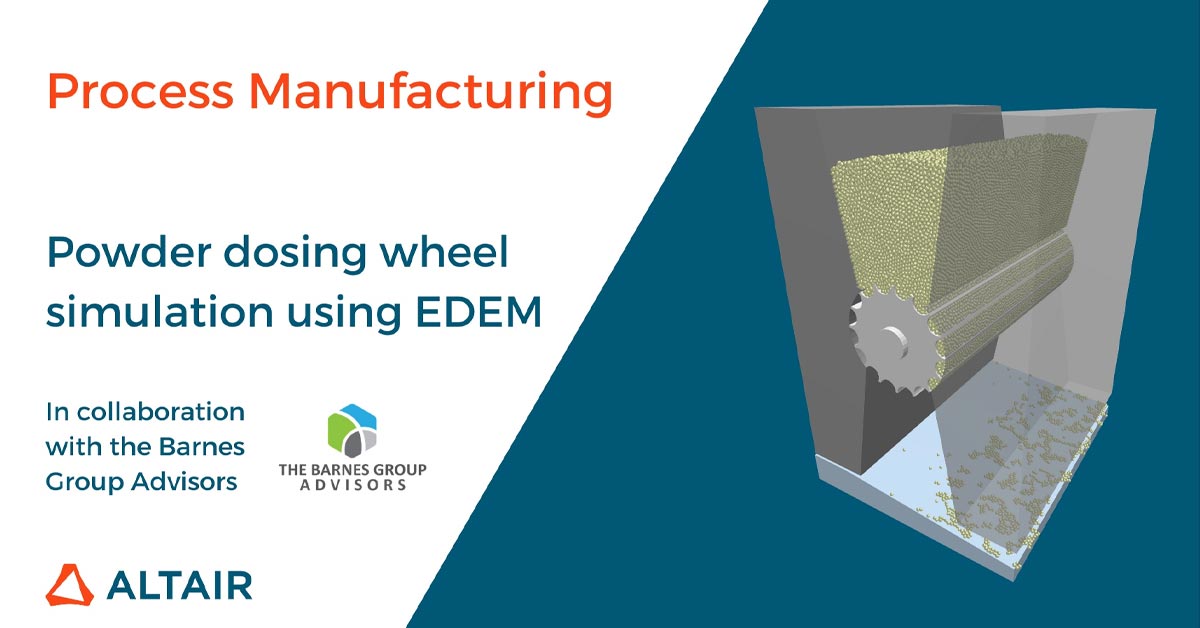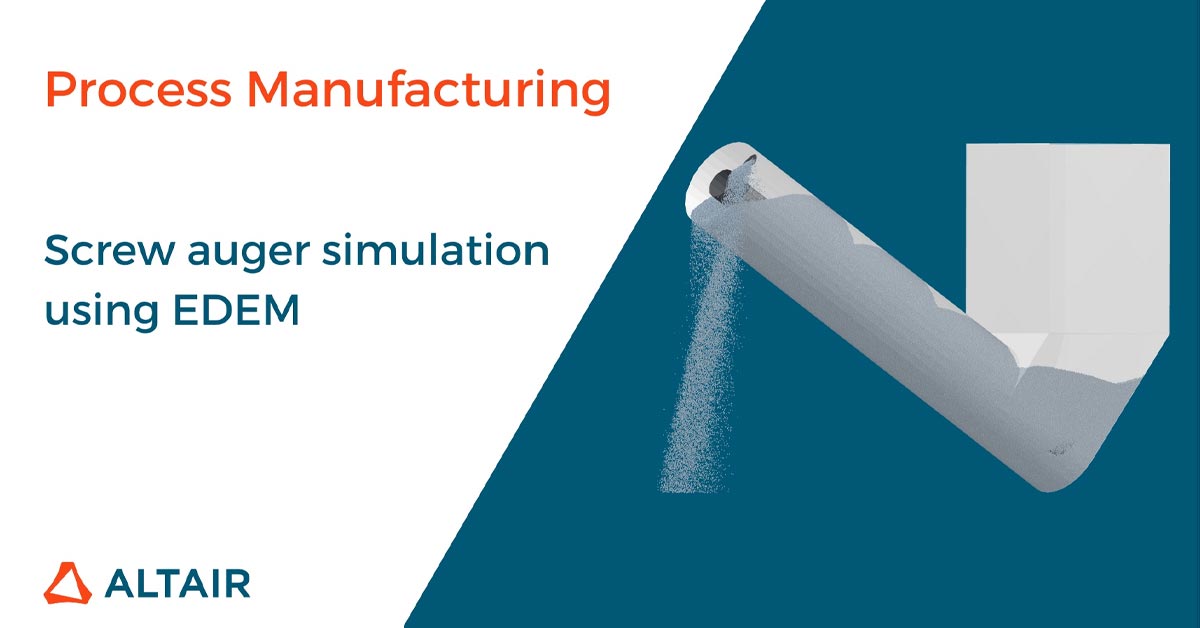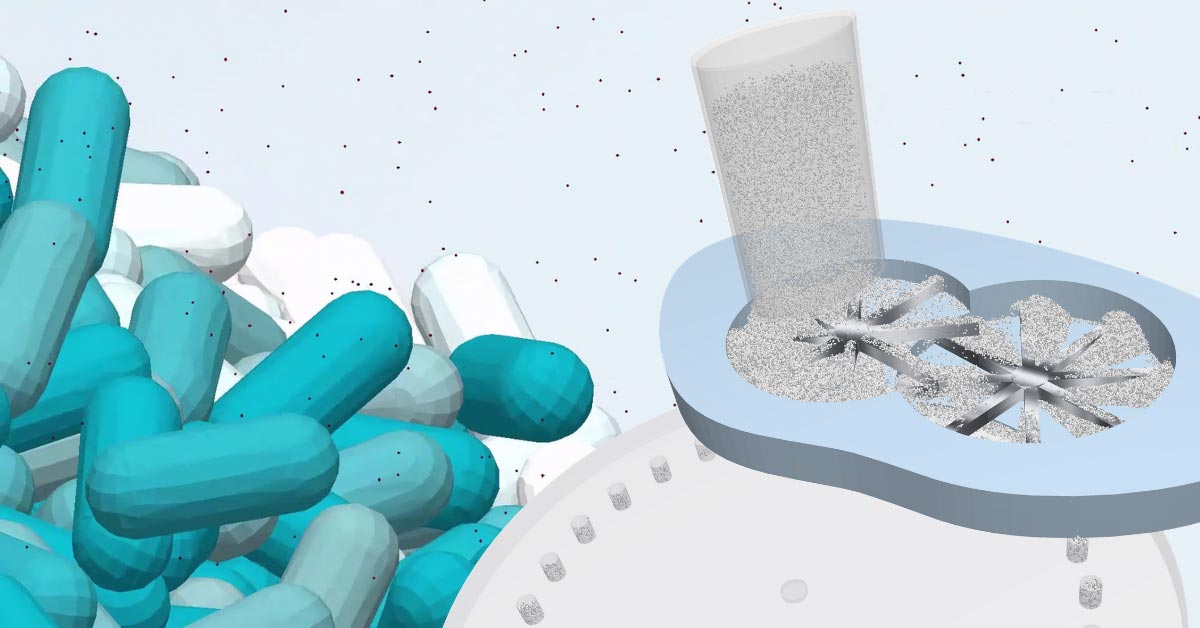Using Altair EDEM for Process Manufacturing
Watch examples of applications of Altair EDEM in the pharmaceutical, food, chemicals and additive manufacturing industries.
EDEM software, powered by the Discrete Element Method (DEM), enables companies to accurately simulate and analyze the behavior of bulk solids, providing key information on processes otherwise difficult or sometimes impossible to measure. EDEM enables a detailed analysis and visualization of the flow of particles, from powders to tablets, through process segments and handling equipment and can promote both innovation in product design as well as reducing the need for physical prototypes and long product development cycles.
Wurster Coater Modeling using Altair EDEM and Altair AcuSolve
By coupling Altair software tools EDEM with AcuSolve, engineers can gain key insights into the coating and drying process. Users can identify how to improve on the coating obtained in the process by modifying the draft tube position, spray rate or airflow rate and temperature.
EDEM Simulation of Wet Mixing - Liquid Transfer in a Drum Mixer
In this example, EDEM’s API can be used to introduce custom physics to the simulation, allowing particles to have a liquid content. Here, particles with a water content are added into a mixer containing powder. EDEM allows users to study the increase in water content over time and to analyze mixing efficiency.
EDEM Simulation of Powder Mixing in High Shear Granulator
The video presents how EDEM can be used to analyze the mixing efficiency within a High Shear Granulator filled with 10 million particles. EDEM allows to visualize mixing from different angles, color particles by velocity to see where particles stagnate and analyze the mixing effectiveness by showing the concentration of each type of particles in the mixer.
EDEM Simulation of Tablet Coating
The EDEM API is used to create custom contact models and properties to simulate tablet coating process. The video demonstrates how EDEM can be used as a predictive tool to perform virtual testing and investigate the effects of parameters like tablet shape or coating pan speed on the coating uniformity.
Analysis of a Conical Ribbon Blender Using Altair EDEM
This video presents how EDEM can be used to achieve a reliable mixing process for bulk solids enabling engineers to meet product quality requirements in a wide range of industries without the need for physical trial and error.
EDEM Simulation of Tablet Compaction
In this video EDEM is used to simulate and analyze a tablet compaction process, using the Edinburgh Elasto-Plastic Adhesion contact model (EEPA) to capture the complex behavior of the powders. EDEM enables users to obtain key micro-mechanical information such as compression forces, stress and porosity and to predict tablet defects.
EDEM Simulation of a Pin Mill
Pin mills are widely used across many industries to comminute bulk solids like chemicals, sugar, herbicides and resins. In this video EDEM is used to simulate and analyze material size reduction in a pin mill, using the Tavares Breakage Model to accurately simulate breakage.
EDEM Simulation of Die Filling for Pharmaceutical Powders
This video shows the analysis of the feed frame for the die filling process for pharmaceutical powders. EDEM allows the use of colors to differentiate powders by type, velocity and residence time. Additionally, the set-up of bins enables collecting, extracting and plotting the data, for further analysis.
EDEM Simulation of Food Processing Extruder
This video was part of a project with Micron, where EDEM was used to model a food processing extruder. Using EDEM software it was possible to simulate how the material turns into a solid under high compression at the extruder nozzle. In addition, key analysis was conducted on the system including material throughput through the nozzle and identifying the amount of material not discharged.
EDEM Simulation of a Palm Fruit Separation Process
EDEM can be used to simulate a range of food handling and processing operations. In this video EDEM is used to analyze the separation process of palm fruits, ensuring that the fruits are not damaged and that the process is optimized.
Fluidized Bed Simulation Using EDEM and AcuSolve
Fluidized beds have been in use for almost 100 years for a wide range of processes including powder mixing, powder and tablet coating and powder bed heating and drying. However, the understanding of fluidized beds is still limited and multiple factors impact the fluidization and efficiency of the process, making it challenging to predict how the process can be improved.
EDEM Simulation of Powder Raking in Additive Manufacturing
This simulation models over 8 million particles of less than 0.3mm in size. Large amounts of tiny particles are common in Additive Manufacturing applications. This video shows powder raking and how EDEM tools can be used to analyze voidage, particle orientation and number of contacts at different time steps.
EDEM Simulation of Hopper Discharge for Powders
This video shows the analysis of the hopper discharge process for powders. EDEM allows coloring the powders by layers, velocity and residence time. By simulating powders with different cohesiveness and varying other parameters, EDEM allows specific equipment and process optimization for different powders.
EDEM Simulation of Cereal Coating Process
EDEM can be used to simulate and optimize a range of food processing operations. In this video EDEM is used to analyze a cereal coating process. Results of the simulation can be used to improve process efficiency and ensure a high quality end product.
EDEM Simulation of Powder Dosing Wheel in Additive Manufacturing
In this collaboration with The Barnes Group Advisors, EDEM has been used to get an insight into the functioning of the material delivery system used in an additive manufacturing printer.
EDEM Simulation of Screw Auger Handling Powders
This video compares the behavior of two different powders in a screw auger – one of the powders being highly cohesive and the other one free flowing. EDEM provides key insight into the discharge of the hopper, the compressive force acting on the powders, the mass flow rate and the power required to drive the screw blade.

